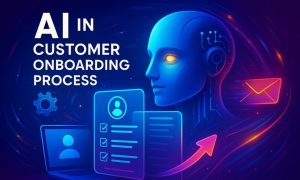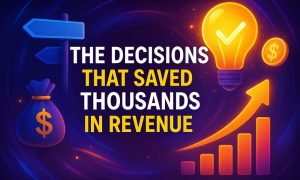As SaaS businesses plan their workflows toward long-term growth, customer success has become a key strategy. In a competitive market, it is not enough to acquire customers. Businesses need to focus on keeping them satisfied and staying loyal—that’s what truly drives success.
Reports say that businesses that invest in customer success software internally experience 30% higher revenue growth than those that don’t. SaaS companies can turn customer success into a powerful driver of customer retention, increased upsell opportunities.
In this blog, we will explain what customer success software is, its importance, and key features to consider to have the best software solution for your business needs.
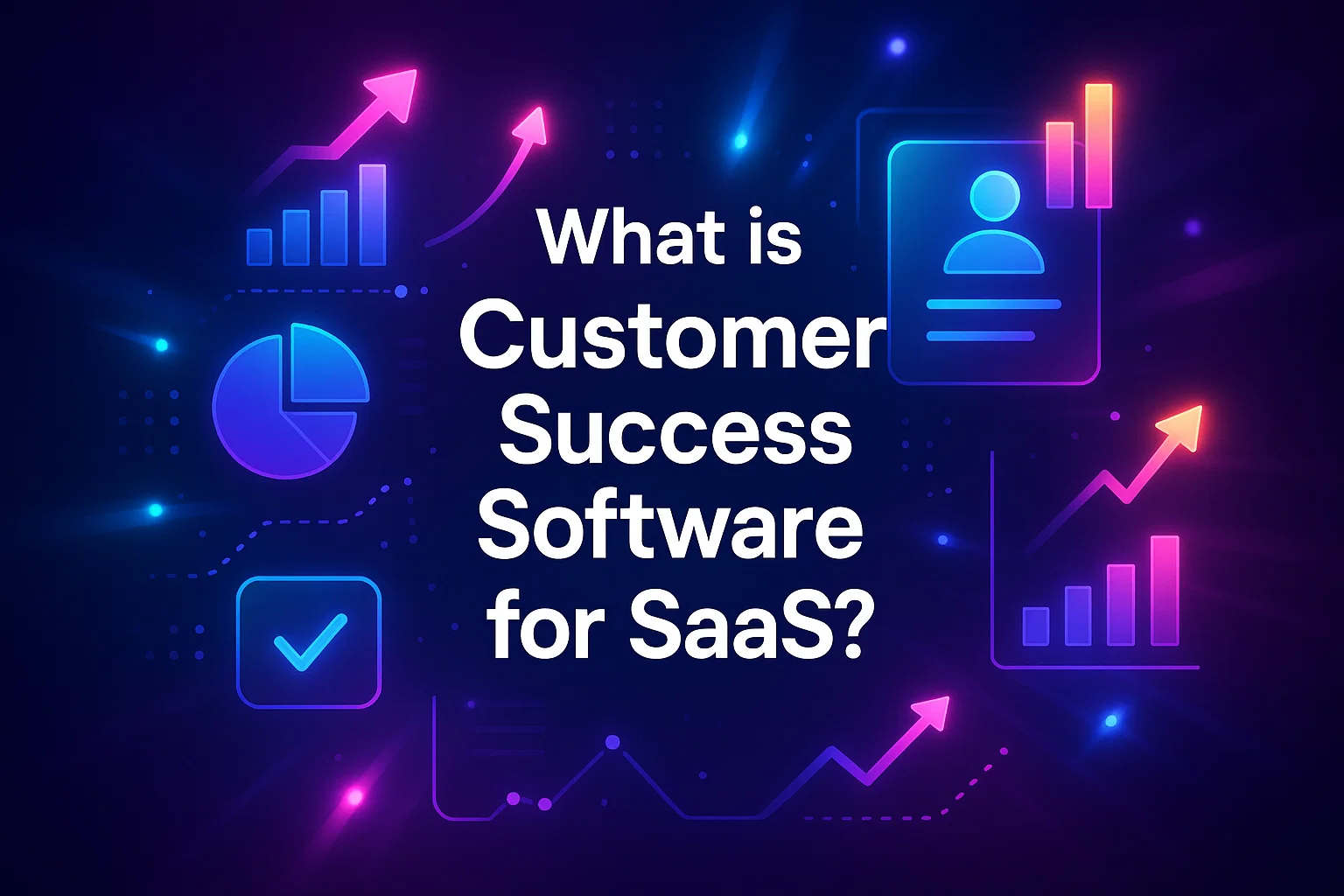
What is Customer Success Software for SaaS?
Customer success software for SaaS is a specialized platform designed to help businesses proactively manage, track, and enhance their relationships with customers, ensuring they continuously gain value from the SaaS product or service.
The fact is far different from the traditional methods that are reactive and address issues after they arise. But the customer success tools are built on a proactive approach and find at-risk customers before problems even accrue.
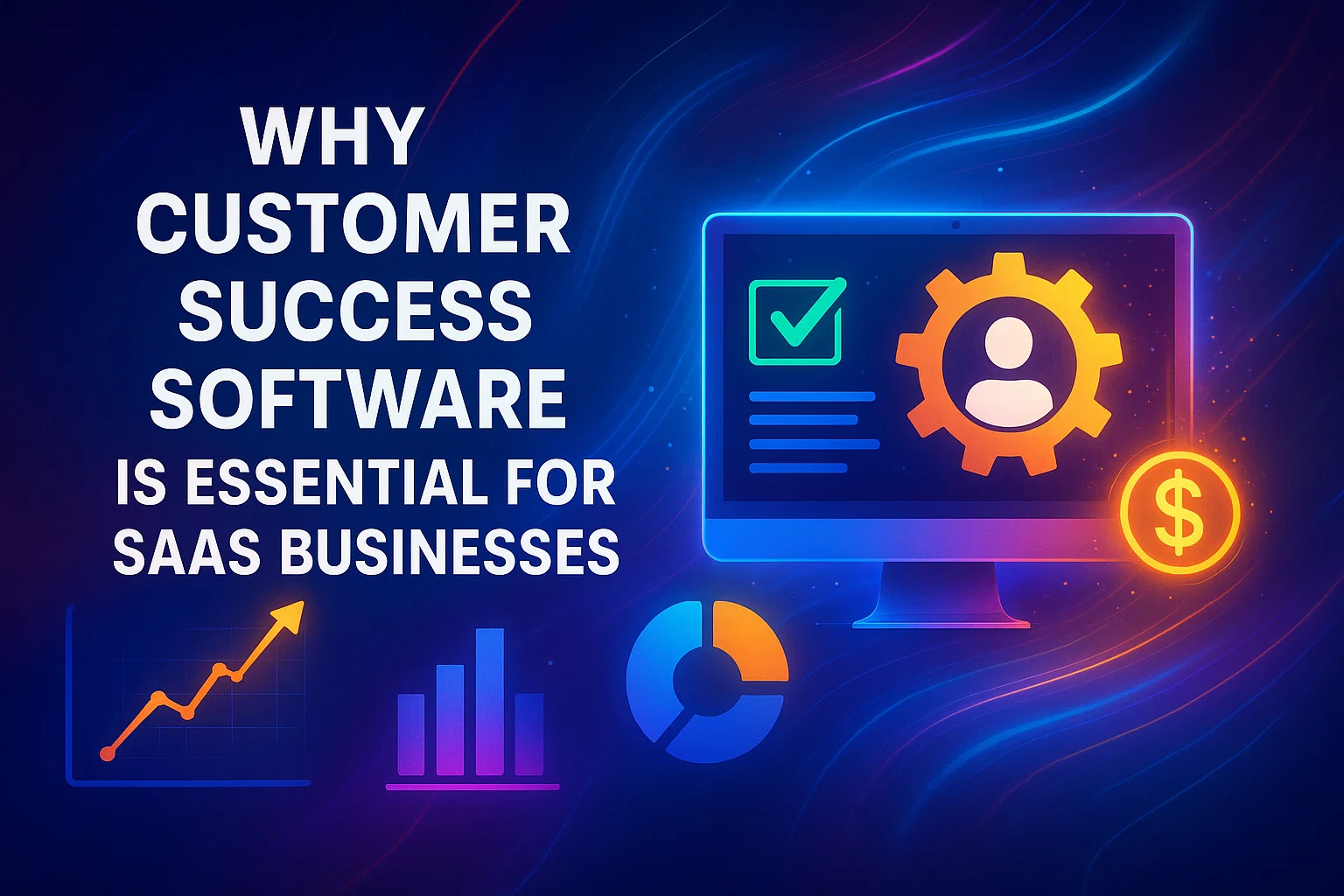
Why Customer Success Software is Essential for SaaS Businesses
Customer success software is an important aspect for SaaS businesses to identify at-risk customers, prevent churn, and ensure long-term customer satisfaction, driving growth. In the SaaS industry, customer relationships don’t just end with the product or service sale. It even starts here.
Here is why customer success software is essential for SaaS companies:
Reduces Customer Churn:
Customer success software helps SaaS businesses identify customers who may be considering canceling their subscriptions. For instance, they track key indicators and use predictive tools to find out the at-risk customer base and take proactive measures. Such as personalized engagement or support before the churn happens. Along with reducing churn, you can improve retention and boost product sales.
Improves Customer Satisfaction:
Customer success software helps businesses implement personalized engagement throughout their lifecycle. It starts from the customized onboarding, training, to ongoing communication. When the customer consistently achieves their goals, it helps build trust and enhances the relationship, driving the business to long-term growth.
Proactive Customer Engagement:
Traditional customer support that responds to customer queries only when they arise, customer success platforms alert to the concern far earlier. By tracking the usage pattern and identifying early signs of potential challenges, businesses can easily find the concerns that could arise in the lifecycle. Business approaches solve them and result in a more positive customer experience.
Improves Revenue Growth through Upsells and Cross-Sells:
Customer success software tracks the customer base who are ready for additional features or upgrades. It offers businesses some effective opportunities that increase revenue growth without extra marketing costs. With the data-driven insights, the software ensures that upsell and cross-sell opportunities are optimized according to the customer’s expectations.
Top 7 Customer Success Software for SaaS
Some of the world-class customer success software optimized for the SaaS business include Staywide, Gainsight, ChurnZero, Totango, and so on. Here we have curated the complete list with the key features included and the pricing details. Have a look:
1. Statwide
Best for: Comprehensive customer analytics and proactive engagement.
Key Features:
- In-depth customer health scoring to track engagement
- Automated workflows for efficient onboarding
- Predictive analytics to identify potential churn risks
- Customizable dashboards and reporting.
- Easy integration with leading CRM systems
Pricing: Contact Statwide for detailed pricing information.
2. Gainsight
Best for: Enterprise-level SaaS companies who are seeking an effective platform to reduce churn and maximize revenue.
Key Features:
- Advanced customer analytics for deeper insights
- Orchestrated customer journey management
- Health scoring and proactive risk management
- Adaptable automation tools
- Easy integration with multiple data sources
Pricing: Median annual cost is approximately $51,670, varying based on company size and requirements.
3. ChurnZero
Best for: Mid-size to enterprise SaaS companies, who are focused on churn reduction.
Key Features:
- Real-time customer monitoring to track engagement and issues
- Automated customer engagement to ensure timely interactions
- Advanced customer segmentation for targeted actions
- In-app messaging for seamless communication
- Detailed reporting tools for actionable insights
Pricing: Median annual cost is around $38,625, depending on features and company size.
4. Totango
Best for: SaaS companies, looking for flexibility in customer management.
Key Features:
- Powerful onboarding tools to guide customers
- Health scoring and automated workflows for efficient engagement
- Advanced reporting and analytics for better decision-making
- Customizable customer segments for targeted strategies
- Integration with multiple platforms, including AI support
Pricing: Plans start at $199 per user/month for the Growth plan; Enterprise plans are custom-priced.
5. ClientSuccess
Best for: SaaS companies seeking ease of use and streamlined customer success processes.
Key Features:
- Simple and intuitive customer tracking
- Clear reporting dashboards
- Efficient onboarding workflows for an improved customer experience
- Customer health scoring to monitor satisfaction
- Integration with major CRMs.
Pricing: Median annual cost is approximately $19,525, varying based on company size and needs.
6. Freshdesk
Best for: Small-to-medium SaaS businesses looking for cost-effective customer success solutions.
Key Features:
- Simplified customer management for streamlined operations
- Basic customer analytics for monitoring engagement
- Integrated support ticketing system for efficient issue solving
Automation of repetitive tasks.
Multi-channel support for seamless communication.
- Integrated support ticketing system for efficient issue solving
Pricing:
- Growth: $15/agent/month
- Pro: $49/agent/month
- Pro + AI Copilot: $78/agent/month
- Enterprise: $79/agent/month
7. Intercom
Best for: SaaS companies focusing on customer communication and engagement
Key Features:
- Live chat and messaging for real-time customer support
- Automated customer onboarding to guide new users
- In-app messaging and product tours for enhanced user experience
- Customer segmentation and targeting for personalized communication
- Integration with various tools and platforms
Pricing:
- Essential plan: $39 per seat per month
- Advanced plan: $99 per seat per month
- Expert plan: $139 per seat per month.
Key Features to Look for in Customer Success Software
Before subscribing to a CS software, look for some key features, such as automation workflows, customer health tracking, and CRM integration. Also, it should offer effective communication channels, engagement analytics, and scalability with a growing customer base.
Take a detailed look at all essential features for CS software:
1. Customer Health Scoring
Through the Customer Health Scoring, businesses can track customer engagement, satisfaction, and potential risk from various data points. It includes product usage, customer interactions, and support tickets.
- Find out at-risk customers and ensure timely support.
- Provides data on the real-time behavior and helps in proactive engagement.
- Identifies the potential issues before they arise and reduces churn.
2. Workflow Automation
Automation optimizes the repetitive tasks in the business workflow. This includes onboarding, email follow-ups, health check-ins, and task assignments. Through this, teams easily free up and focus on maintaining efficiency.
- It overall saves time and reduces manual workload.
- Ensures consistent communication and touchpoints with customers
Improves team productivity as they can focus on high-value activities
- Ensures consistent communication and touchpoints with customers
3. Segmentation and Personalization
Through the specialized Segmentation features, businesses can group customers based on their behavior, lifecycle stage, or value.
- Businesses offer personalized messaging and improve customer satisfaction.
- Increases the efficiency of upselling and cross-selling.
- Helps to find the high-value customers to offer more features.
4. Onboarding Management
Proper onboarding management helps businesses guide new customers through step-by-step journeys and offer in improving their time-to-value (TTV). What’s more, can you expect?
- Improves customer adoption and satisfaction
- Reduces the likelihood of confusion or frustration
- Enhances early-stage engagement and leads to stronger customer relationships
5. In-App Messaging and Product Tours
Through personalized in-app messaging and direct communication with users, customers can change the details to understand how well it is going for them.
- Boosts feature discovery and engagement.
- Guides users toward key actions or milestones.
- Offers real-time support and ensures an enhanced user experience.
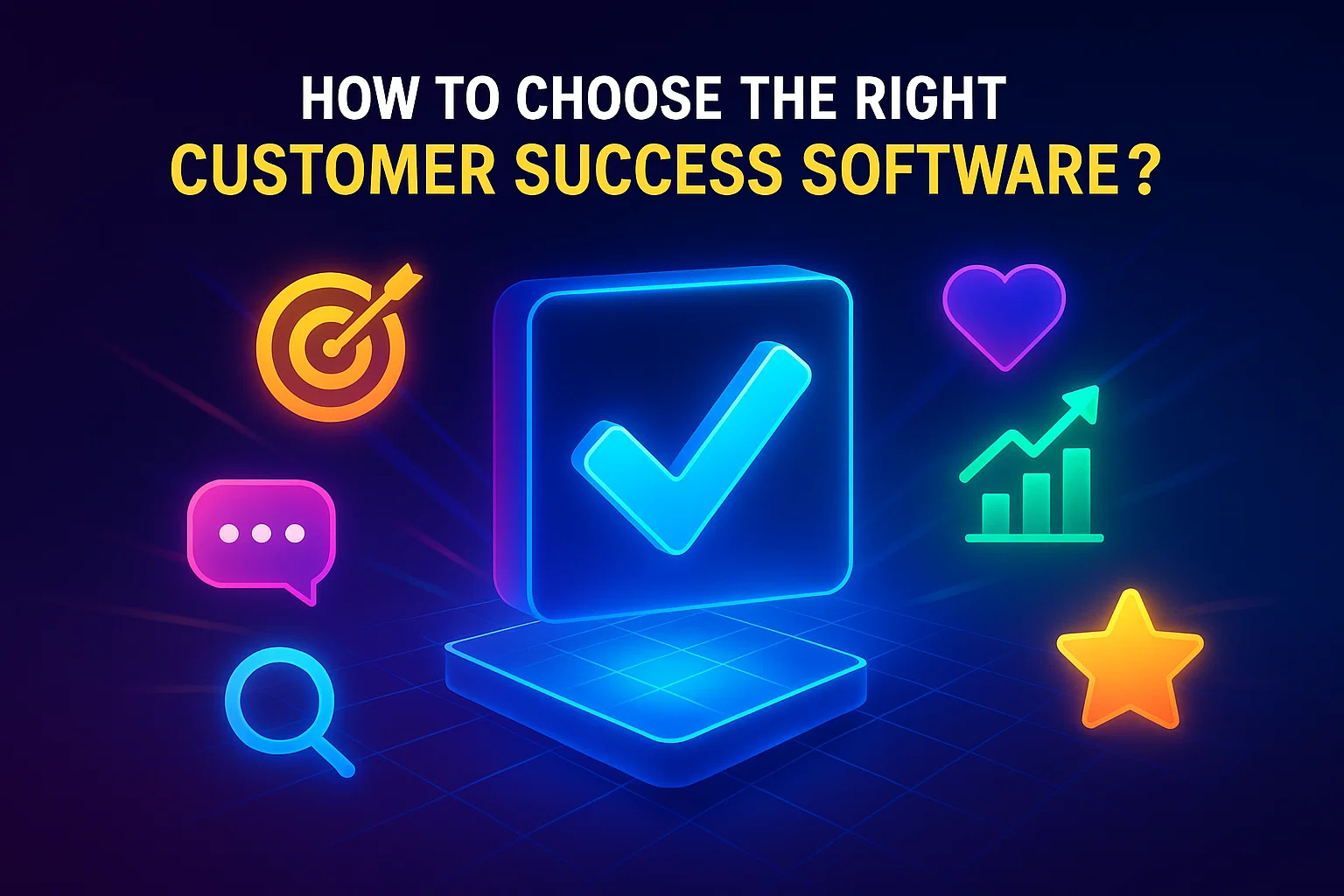
How to Choose the Right Customer Success Software?
To choose the best customer success software, define your business needs, integration requirements, and the key features requirements that drive customer retention and growth
Here’s a step-by-step guide to consider for having a reliable customer success software:
1. Assess Your Business Needs
First, define what actual success means for both your customer and business model. For instance, consider the size and complexity of your customer base along with the size of your team and current workflows.
Also, don’t forget to identify the internal objectives, such as whether you need to reduce churn, improve onboarding, or increase upsells.
2. Focus on Integration Capabilities
Choose the customer success software that integrates with your existing stack, such as your CRM, helpdesk, marketing automation, and analytics platforms. A reliable software solution that collects data across various points offers a 360° view of your customers and helps the team to improve overall efficiency.
All you need to ensure is that the team is accessing consistent and up-to-date information.
3. Consider Ease of Use
The effectiveness of customer success software depends on how easily your team can use it. Look for a platform:
- An intuitive interface that requires minimal training.
- Check for positive reviews on user experience.
- Changeable features to meet the growing customer needs.
4. Understand Pricing Structure
The pricing structure of the customer success platform can vary significantly, so it’s important to clarify what’s included in each pricing tier. This includes the number of users, integrations, and features. For finance, make sure you are considering some other major factors like onboarding, support, and potential upgrades to meet your budget setting.
5. Look for Strong Support and Training
When evaluating customer success software, ask yourself the following questions:
- Is onboarding included to ensure a smooth setup?
- Is the platform offering training materials, documentation, and live support?
- Does the vendor offer a dedicated customer success manager to assist with your account?
6. Check Reviews and Case Studies
Before you finalize the decision, take time and explore real user experiences on platforms such as G2, Capterra, or TrustRadius. For instance, you can look for SaaS companies of similar size or industry. Evaluate how well the software meets your needs. Effective case studies provide valuable insights into their real-world experience.
Mistakes to Avoid When Choosing Customer Success Software
Some most common mistakes to avoid when choosing the CS software include selecting a solution that doesn’t align with your business needs, a lack of integration features, and ignoring the outcomes.
Here is how you can solve them:
1. Ignoring Scalability
It is common among CS teams that they focus on a tool that works well for their current needs, but as they come to the point that it can’t keep up as the business grows.
Solution: Choose a platform that is designed to scale with your business growth. Focus on handling larger data volumes.
2. Overlooking Integration Capabilities
It is not best practice if you choose a software that doesn’t integrate with your CRM, support tools, or other systems.
Solution: Choose software that offers strong integration features, ensuring a seamless customer experience across all departments.
3. Focusing Only on Features, Not Outcomes
It is easy to get caught up in all the engaging features in one tool, but the chances are it may not resolve all your current CS issues.
Solution: Look beyond the features. It is recommended to look at how each tool will help you achieve key customer success goals.
4. Underestimating the Learning Curve
If the software you are choosing is too hard to use, it will obviously lead to frustration and ultimately reduce the effectiveness of your team.
Solution: Look for a platform that has a clean UI and strong onboarding support. Test the platform with a small group first to make sure it fits your team’s needs.
5. Neglecting Customer Feedback
Some businesses ignore the users’ feedback, like the experiences and opinions of current customers who have already used it.
Solution: Read third-party reviews from platforms like G2 or TrustRadius, talk to other businesses or professionals in your network, and ask vendors for customer references or case studies.
Author
Shirikant is a proven customer success leader who combines sharp business insight with practical experience to improve retention and drive revenue. As the founder of Statwide, he designs customer-first business strategies that guide companies to turn users into loyal and long-term partners. His approaches are built on real results: stronger relationships, higher customer value, and lasting growth.



